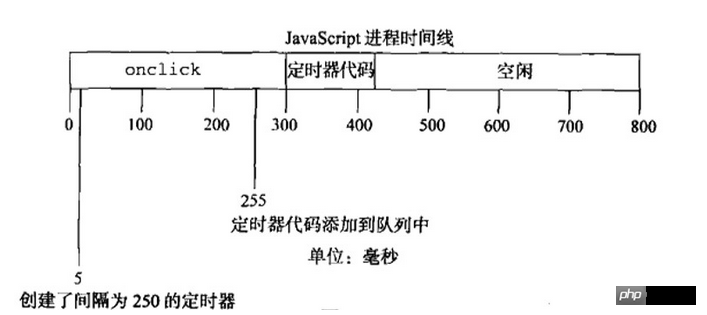Home > Article > Web Front-end > Detailed explanation of the use of JS animation timer
This time I will bring you a detailed explanation of the use of JS animation timer. What are the precautions when using JS animation timer? The following is a practical case, let’s take a look.
Broadly speaking: All visual presentations changed through js are called animations; for example, buttons, links and other elements Interactive feedback.
In a narrow sense: the visual animation effect produced by continuously calling js functions through timers to change element attributes.
Timer is the core technology of JavaScript animation;
setTimeout(), setInterval() are well known and often used in the past;
Usually they do something auxiliary and icing on the cake;
Careful people may find a phenomenon, switching from other tabs to the page with loop animation will cause lag and rapid frame switching;
The problem lies in their internal operating mechanism;
It is recommended to use the function form for the first parameter, the string form will be parsed twice, and eval is the same Question;
More than two parameters, there can be more, see example 1;
This points to the problem, see example 2;
The return value is an integer;
clearTimeout(timer) cancels the timer;
setInterval, clearInterval are the same as above;
Example 1:
setTimeout(function(a,b){
console.log(a+b);
},1000,1,1);
Example 2:
var a = 0;
function foo(){
console.log(this.a);
};
var obj = {
a : 2,
foo:foo
}
setTimeout(obj.foo,100);
Example:
setTimeout(function(){
console.log(1);
});
console.log(0);
Reason: Join the queue and block execution.
setTimeout legend:

setInterval legend:

callback function, usually triggered before the browser's default action, see example 4;
Example 3:Example 4:
Get to know requestAnimationFrameThe usage is similar to setTimeout, except that no time parameter is required;The mechanism is completely different: 1, setTimeout is an asynchronous operation and is added to the task queue (event loop). When the synchronization code in the js engine thread is executed, it will be taken out from the task queue for execution; 2. raf is an interface developed specifically for animation by user agents (browsers). The user agent will update animation frames at an appropriate frequency (generally the same as the monitor refresh frequency, 1000/60ms), and will stop frame updates on hidden or inactive pages. , save CPU resources; 3, raf example

window.requestAnimFrame = (function(){
return window.requestAnimationFrame ||
window.webkitRequestAnimationFrame ||
window.mozRequestAnimationFrame ||
function( callback ){
window.setTimeout(callback, 1000 / 60);
};
})();Detailed explanation of Angular Component use cases
Detailed explanation of third-party UI framework and control usage steps in Angular
The above is the detailed content of Detailed explanation of the use of JS animation timer. For more information, please follow other related articles on the PHP Chinese website!